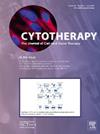Considerations for manufacturing of cell and gene medicines for clinical development
IF 3.2
3区 医学
Q2 BIOTECHNOLOGY & APPLIED MICROBIOLOGY
引用次数: 0
Abstract
The global changes from 2001 that elevated substantially modified cell therapies to the definition of “medicinal product” have been the catalyst for the dramatic expansion of the field to its current and future commercial success. Europe was the first to incorporate human somatic cells into drug legislation with the medicines directive of 2001 (2001/83/EC), which led to the development of the term “advanced therapy medicinal products” (ATMPs) to cover all substantially modified products, tissue-engineered products and somatic cells that are not substantially modified but that are used non-homologously. For convenience, I use the term “ATMPs” throughout this review. The transition from “cell therapy” to “cellular medicine” coincided with changes in clinical trial legislation in Europe and, subsequently, across many drug jurisdictions throughout the world. As medicines, there is a clear path through multiple phases of trials and associated requirements for compliance with the good practice standards of drug development, and manufacturability is central to this development.
用于临床开发的细胞和基因药物的生产考虑。
从2001年开始,全球范围内的变化将大幅改进的细胞疗法提升到“医药产品”的定义,这是该领域急剧扩张的催化剂,使其在当前和未来取得商业成功。欧洲是第一个将人类体细胞纳入药物立法的2001年药品指令(2001/83/EC),这导致了术语“先进治疗药物产品”(atmp)的发展,以涵盖所有实质性修改产品,组织工程产品和体细胞,这些产品没有实质性修改,但使用非同源性。为了方便起见,我在本文中使用了术语“atmp”。从“细胞疗法”到“细胞医学”的转变与欧洲临床试验立法的变化同时发生,随后在世界各地的许多药物管辖区也发生了变化。作为药物,通过多个试验阶段和符合药物开发良好做法标准的相关要求有一条明确的路径,可制造性是这一开发的核心。
本文章由计算机程序翻译,如有差异,请以英文原文为准。
求助全文
约1分钟内获得全文
求助全文
来源期刊

Cytotherapy
医学-生物工程与应用微生物
CiteScore
6.30
自引率
4.40%
发文量
683
审稿时长
49 days
期刊介绍:
The journal brings readers the latest developments in the fast moving field of cellular therapy in man. This includes cell therapy for cancer, immune disorders, inherited diseases, tissue repair and regenerative medicine. The journal covers the science, translational development and treatment with variety of cell types including hematopoietic stem cells, immune cells (dendritic cells, NK, cells, T cells, antigen presenting cells) mesenchymal stromal cells, adipose cells, nerve, muscle, vascular and endothelial cells, and induced pluripotential stem cells. We also welcome manuscripts on subcellular derivatives such as exosomes. A specific focus is on translational research that brings cell therapy to the clinic. Cytotherapy publishes original papers, reviews, position papers editorials, commentaries and letters to the editor. We welcome "Protocols in Cytotherapy" bringing standard operating procedure for production specific cell types for clinical use within the reach of the readership.
 求助内容:
求助内容: 应助结果提醒方式:
应助结果提醒方式:


